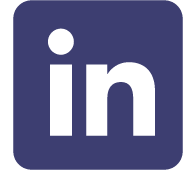Population Health Management (PHM) is a process of aggregating patient data and analyzing it into a single, actionable patient record. This relatively new approach is made possible through the advancements in business intelligence, which can analyze large data
When implemented effectively, PHM programs provide health care organizations with real-time insights into how their clinicians and administrators are treating patients. The insights will point out discrepancies, care gaps, and identify cost-saving opportunities.
In many ways, PHM programs are the healthcare industry’s latest response to the big data evolution. Fueling the benefits of PHM is the increased impact that performance and patient satisfaction have on an organization’s financial outlook. However, the hefty price tag of starting a PHM program is a primary obstacle preventing implementation.
To give organizations and healthcare leaders a better understanding of Population Health Management, here are some of the benefits of PHM as well as some of the barriers that are slowing its adoption.
Benefit: Financial Improvement
One of the primary goals and benefits of a PHM program is to provide an objective and quantitative view of the cost of care. The data allows organizations to focus on utilization numbers to determine if they’re providing efficient care. If the numbers reveal inefficiencies, the organization can use the data to adjust their practices.
Benefit: Identify the Greatest Patient Needs
By collecting and analyzing large sets of data, PHM programs can pinpoint the greatest needs of their patient population. From there, organizations can create strategies to provide efficient care to address these needs.
Benefit: Enabling Value-Based Care
Many organizations are in the process of transitioning over to value-based care, or value-based reimbursement, model. A critical component to value-based care is having an acute understanding of the patient population—from which providers can learn the most effective ways to provide treatment.
Challenge: Patient Attribution
For a PHM program to be effective, a provider will need to have access to all of their patients’ medical backgrounds. This becomes complicated when payers assign primary care providers to their beneficiaries. When this happens, providers will be financially responsible for patients who they have not treated before.
Challenge: Reimbursement Model
Most of the current healthcare models date back to the fifties and sixties and are structured around paying a fee in exchange for a service. This model aims to treat sickness, rather than promote health—which runs counter to the directives of PHM programs. Shifting to the PHM model where providers need to cultivate patient engagement and motivate them to take an active role in their care requires a new outlook and approach. Getting buy-in from the entire organization can be challenging for providers.
QLK Executive Search
As the healthcare sector continues to adopt patient-centricity, more and more providers will need to invest in implementing PHM programs. If your organization needs a dynamic leader with experience in making this shift, we can help. Contact QLK today to learn more about who we are and our approach to executive search.


